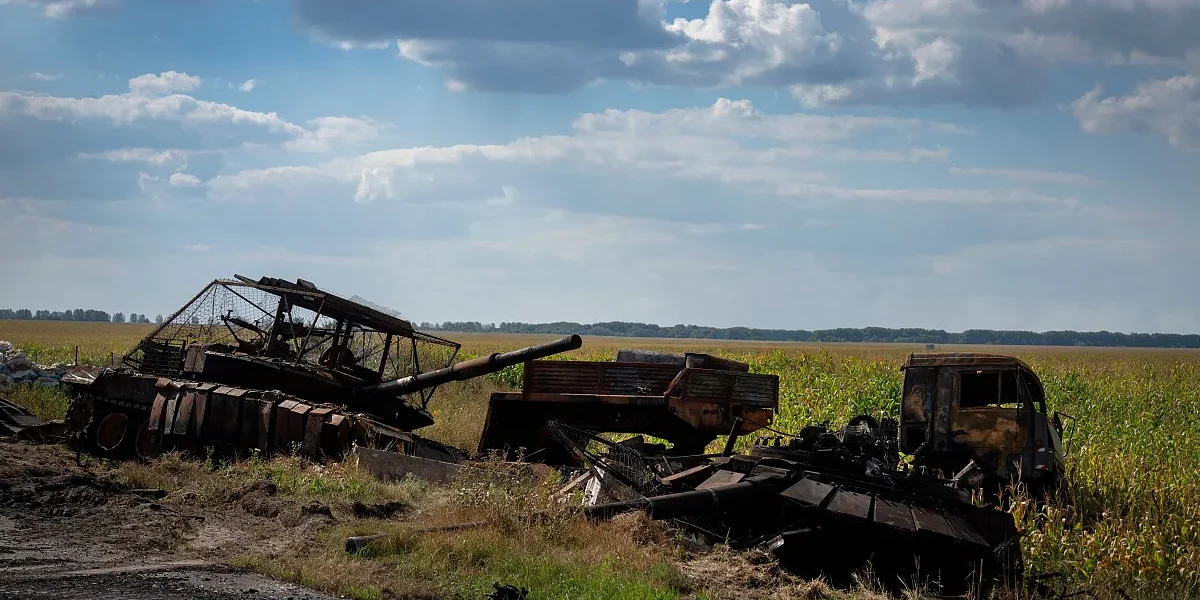Russia has launched a major counteroffensive in the Kursk region as part of its retaliation for Ukraine’s bold cross-border incursion. Although the Kremlin has not officially declared the operation, mounting evidence from battlefield reports and visuals shared by pro-Russian bloggers suggests that Russian forces are now taking aggressive steps to reclaim lost territory.
The operation appears to be gaining momentum, with Major General Andrei Kartapolov confirming that Russian troops have retaken around 10 settlements in the Kursk region. Kartapolov, who also serves as the deputy head of the Russian Defense Ministry’s military-political department, stated, “The situation is good for us. We have regained control over a number of key areas.” New footage circulated online corroborates these claims, showing Russian forces pushing Ukrainian troops back and capturing prisoners of war.
According to Russian media and military sources, elite Ahmad Special Forces are playing a critical role in this counteroffensive, engaging in heavy fighting across the region. Footage from the frontlines shows Russian soldiers advancing in Snagos, a contested area where Russian and Ukrainian forces have been clashing frequently. Videos also depict Ukrainian POWs being escorted through the battlefield, further indicating Russia’s gains in the conflict.
This Russian counteroffensive comes in response to Ukraine’s unprecedented attack on Russian soil earlier this month, where thousands of Ukrainian troops crossed the border and made significant territorial gains. However, Ukraine’s operation in Kursk may have overextended its resources. Reports from the battlefield suggest that Ukraine’s progress has slowed, and its forces may be struggling to hold on to captured areas.
Russia claims that Ukraine has suffered 10,000 casualties during its incursion into Kursk, while Russian forces have steadily made progress in Eastern Ukraine, particularly in the strategically important city of Pokrovsk. If Russian forces successfully capture Pokrovsk, it would provide them with a key logistical hub and pave the way for deeper incursions into Ukrainian territory. Control over Pokrovsk would also strengthen Russia’s grip on the broader Donbas region, which remains a primary objective for Moscow.
The Ukrainian government had hoped that the Kursk offensive would force Russia to divert troops from its efforts in Eastern Ukraine, but this strategy appears to have backfired. Russian forces have continued to push forward in the East, tightening their hold on important settlements and bringing them closer to key Ukrainian strongholds.
Meanwhile, diplomatic efforts to end the conflict remain stalled. President Vladimir Putin has dismissed the prospect of peace talks, citing Ukraine’s incursion into Russian territory as a turning point. His hardened stance has further diminished hopes for a peaceful resolution to the war.
In Washington, U.S. Secretary of State Antony Blinken has hinted that the Biden administration may soon lift restrictions on Ukraine’s use of long-range Western weapons, including Storm Shadow missiles provided by the UK. Reports suggest that the British government has already given the green light for Ukraine to use these missiles to target Russian forces inside their own borders.
Russia has repeatedly warned that such a move could trigger a direct confrontation between NATO and Moscow. The Kremlin has labeled the use of long-range Western weapons on Russian soil as a “red line,” the crossing of which could escalate the conflict beyond Ukraine’s borders and pull the West deeper into the war.
As Russia ramps up its counteroffensive in Kursk and Ukraine continues to request additional military support from its Western allies, the conflict shows no signs of de-escalating. The next phase of this war is likely to bring even more uncertainty, with both sides preparing for further clashes. The question remains: How far will this conflict escalate, and what will the global consequences be?






